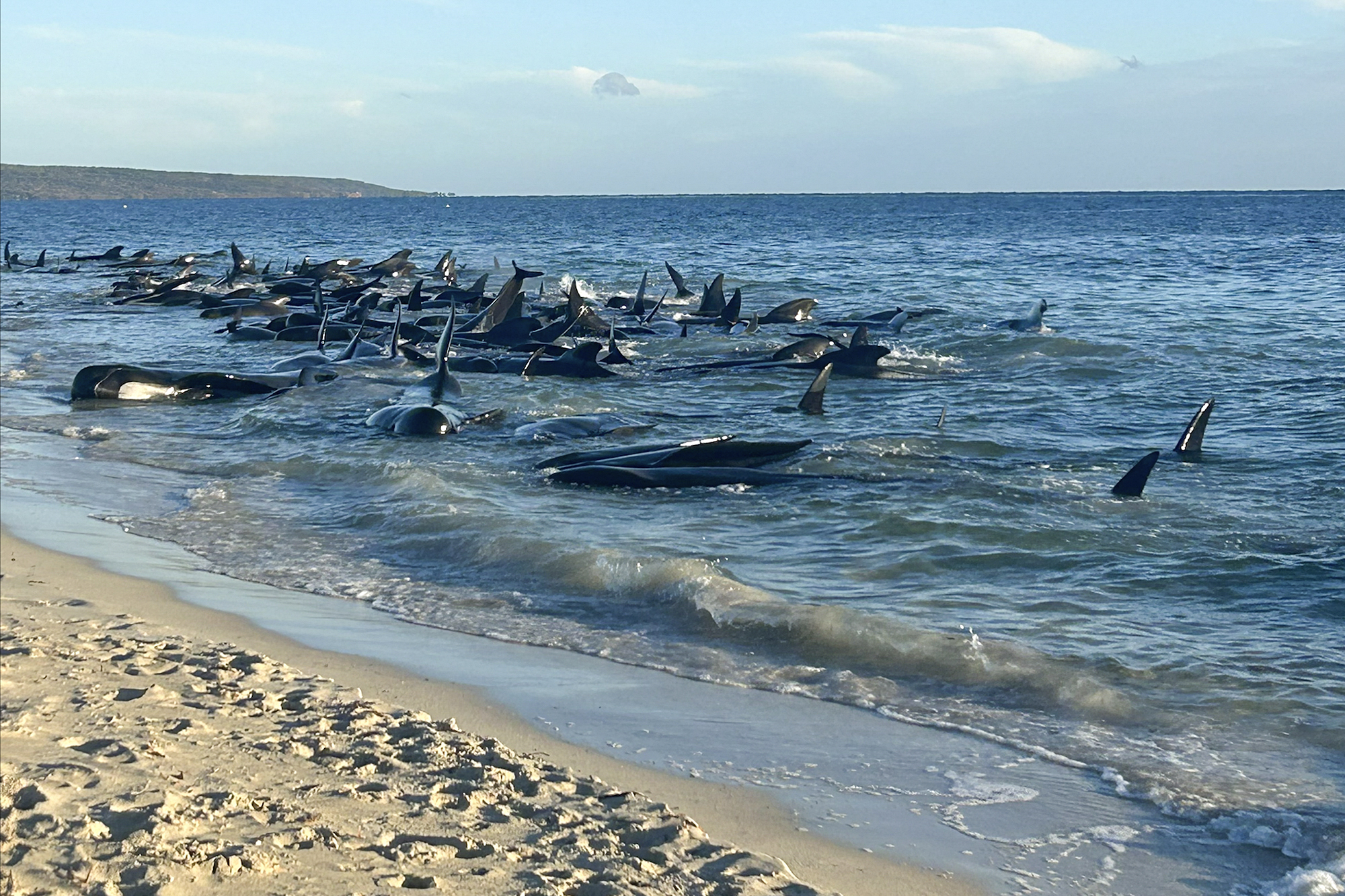WASHINGTON, DC, October 14, 2008 (ENS) - There are now between 80 and 100 panthers in Florida, a four-fold increase over the past 25 years, federal wildlife officials said today, announcing new guidelines for human-panther interaction.
One of the rarest large mammals in the United States, the Florida panther, Puma concolor coryi, is listed as endangered under both the federal Endangered Species Act and Florida law.
Once panthers lived from eastern Texas or western Louisiana and the lower Mississippi River Valley, east through the southeastern United States including all of Florida.
Twenty-five years ago numbers fell as low as 30 animals, but recovery actions, particularly genetic augmentation initiated in 1995, enabled the population to grow to an estimated 80-100 panthers.
During this same period, the Florida human population has grown 260 percent, from about five million to nearly 18 million people. Because of increases in numbers of people and panthers, urban-suburban areas now interface with panther habitat.
This situation increases the possibility of interaction between people and panthers. Definitive guidelines and instructions were needed to maximize the best outcome for both panther conservation and public safety.
The U.S. Fish and Wildlife Service today set forth guidelines for managing potential interactions between people and Florida panthers and for educating the public about safe behavior when living in panther habitat or exploring there.
U.S. & World
"The Service, the National Park Service, and the Florida Fish and Wildlife Conservation Commission are ensuring public safety by establishing protocols for responding to possible encounters between humans and panthers," said Sam Hamilton, southeast regional director for the U.S. Fish and Wildlife Service.
"At the same time, we also are trying to address the conservation needs of this critically endangered animal mainly found south of Lake Okeechobee," he said.
Managing panther-human interaction might include outreach and education, aversive conditioning, or removal of cached panther prey.
"If a panther's behavior indicates a high risk to human safety, it will be permanently removed from the population by captivity or euthanasia," the Response Plan states.
Risk to humans is low if they see a panther from a distance and it retreats or displays wariness and does not approach.
The risk to humans is low to moderate if there is an unexpected direct meeting or a series of meetings over a short period between a human and a panther that exhibits nonthreatening behavior. Multiple encounters involve the same panther, which over a short period has shown no aggression nor has deliberately approached people in an area.
The risk to humans is moderate to high if the panther displays potentially threatening behavior.
Threatening behavior means that the panther does not retreat when humans take offensive/aggressive actions, or if it shows signs of curiosity including ears up, intent attention, intense staring, following or hiding behavior.
The risk factor is high if the panther crouches with tail twitching, intense staring, ears flattened, body low to the ground, head may be up. This is pre-attack behavior.
If the panther's ears are flat, fur out, tail twitching, body and head low to ground, rear legs pumping, an attack is imminent.
The assessment advises that humans should not provoke undesirable behavior in a panther by "running away and triggering the chase behavior, not allowing the animal an escape route, or approaching an animal that is feeding or has young."
"A panther that exhibits threatening behavior or is involved in an attack will be permanently removed from the population or destroyed," the Response Plan states. "Public safety is the primary concern of the interagency response team."
Relocation is an option only if the panther's location presents a possible threat to human safety, if a male panther wanders into an urban neighborhood and cannot find its way out, for instance, or there is a threat to the survival of a panther that may enter an area containing numerous physical hazards.
Depending on specific circumstances, the panther may be captured and relocated to suitable habitat, if available, or to an approved captive facility, if necessary, the plan states.
Relocating a panther into the territory of other panthers is risky for the introduced panther, the experts say. They call it intraspecific aggression.
"Intraspecific aggression was responsible for the death of a relocated Florida panther in 2005," states the Environmental Assessment. "This 10-month old male panther was removed from the Big Cypress National Preserve in May 2004 because it had been utilizing an area near a Native American ceremonial site. The panther was removed out of respect for the cultural and religious significance of the site to the Miccosukee Tribe of Indians of Florida."
"The panther was relocated 60 miles north to a state forest. In January 2005, the relocated panther was killed by another panther."
Based on the 2002-2003 field count of 87 panthers, the assessment states, "the existing habitat south of the Caloosahatchee River may be at carrying capacity." As a result, no panthers are being relocated into this area.
Because appropriate human behavior is a key to coexisting with wildlife, the plan also includes guidelines for developing an outreach and education program to help people understand panther behavior and actions that should be taken when in panther habitat.
The Interagency Florida Panther Response Team includes law enforcement officers, wildlife biologists, public information officers, and other agency officials from the Fish and Wildlife Service, the National Park Service and the Florida Fish and Wildlife Conservation Commission.
Operational since February 2005, the interagency team provides management guidelines that are in compliance with the scientific requirements of the National Environmental Policy Act.
In a related development, the Service plans to release the final version of the updated Florida Panther Recovery Plan in the Federal Register before the end of this calendar year. This plan outlines future goals and initiatives designed to stabilize and recover the population of this endangered species.
"This response plan is an outstanding result of the combined efforts of biologists and many stakeholders, who are working hard to recover the endangered Florida panther," said Ken Haddad, executive director of the Florida Fish and Wildlife Conservation Commission.
"Our strong partnership is resulting in progress towards recovery of the Florida panther and the response plan is an important part of the work that is underway," he said.
The draft Environmental Assessment was published in May 2006 and a revised version was published in November 2007 for public comments. Comments also were solicited from the Miccosukee Tribe of Indians of Florida and the Seminole Tribe of Florida. A peer review of the Response Plan was also conducted.
Today, the Service announced that a final Environmental Assessment for the Interagency Florida Panther Response Plan is now available online.
Copyright Environment News Service (ENS) 2008. All rights reserved.




